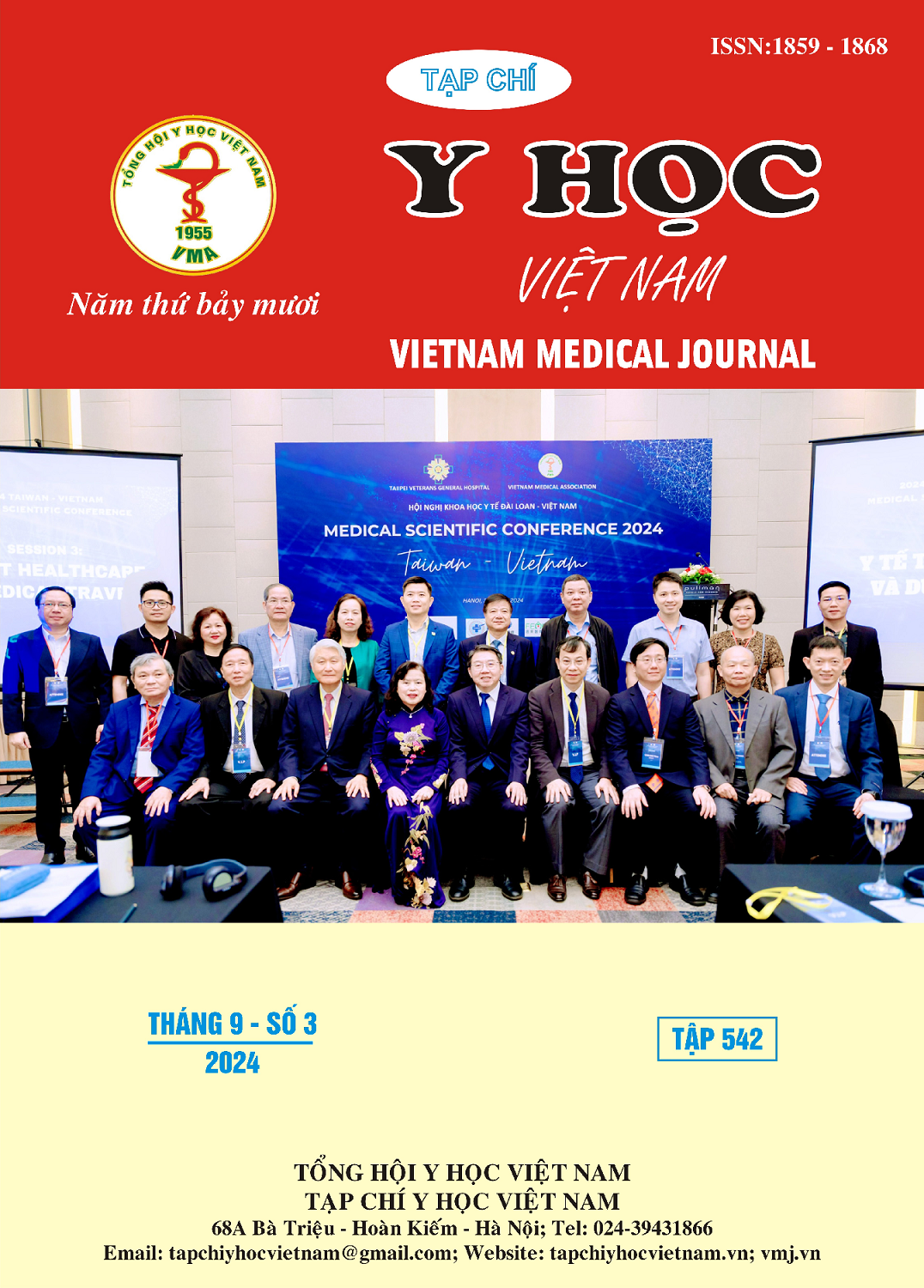TEETH AND DENTAL ARCHES FACTORS DURING DENTITION DEVELOPMENT AFFECTING THE FORMATION OF CLASS II MOLAR RELATIONSHIP IN PERMANENT DENTITION (RESEARCH ON MODELS)
Main Article Content
Abstract
Background: According to Angle's classification, the first molar relationship in the permanent dentition is divided into three types: class I, class II, and class III. The class I molar relationship is considered normal, while the other two types are considered abnormal. Numerous studies indicate that the class II molar relationship (class II malocclusion) is fairly common in the population. The development of this relationship, from primary (T1) to mixed (T2) and permanent (T3) dentition, is complex and influenced by various factors, including teeth, arches, jaw, craniofacial structures, and growth. Globally, there is a shortage of longitudinal studies evaluating the dental and arch factors that influence the establishment of the class II molar relationship in permanent dentition. In Vietnam, this issue has not yet been scientifically studied. Therefore, we conducted the research titled "Teeth and dental arches factors during dentition development affecting the formation of class II molar relationship in permanent dentition (research on models)”. Objectives: Describe the characteristics of teeth and dental arches at each stage (T1, T2, T3) and their development from T1, T2 to T3 in the group with class II molar relationship compared to the group with class I molar relationship in permanent dentition. Identify the factors influencing the class II molar relationship in permanent dentition through logistic regression analysis. Materials and methods: The study followed 64 children, evaluating a total of 128 dental arches (64 upper and 64 lower) from primary dentition (T1) through mixed dentition (T2) to permanent dentition (T3). It accesses 82 factors related to teeth and dental arches at each stage (T1, T2, T3) and examined how the growth of these factors affects the molar relationship in permanent dentition. Results: Compared to the class I molar relationship group, the class II group showed the following characteristics on dental models: a large overbite that persisted from T1 to T3, a small E space in the mandibular arch, an association with the terminal plane of the deciduous second molar at T1 and the molar relationship at T2, a relatively narrow upper dental arch compared to the lower jaw, and the circumference of the upper posterior dental area decreasing more from T2 to T3. Logistic regression analysis identified seven factors influencing the formation of a class II molar relationship compared to a normal class I relationship in permanent dentition, respectively: (a) Molar relationship at T2 (OR = 6.3); (b) Overbite at T1 (OR = 2.11); (c) Dental arch width in the mandibular second molar deciduous region at T2 (OR = 1.9); (d) Change in dental arch width in the mandibular first molar region from T2 to T3 (OR = 1.75); (e) Gap of posterior deciduous teeth in the maxilla (OR = 0.11); (f) E space in the lower jaw (OR = 0.25) and (g) Change in dental arch width in the upper molar region from T2 to T3 (OR = 0.3). Based on these results, the regression equation is: R6 (T3) = -23,6 + 1,8a + 0,7b + 0,6c + 0,6d – 2,2e– 1,4f – 1,2g. Conclusion: Class II malocclusion has signs that can be detected early on dental models and is a complex syndrome influenced by multifactorial and multidimensional factors. Therefore, early detection, diagnosis, and intervention are crucial. Timely intervention should be based on the underlying causes and should include multi-dimensional approaches, addressing both sagittal and transverse dimensions
Article Details
Keywords
: class II malocclusion, multifactor logistic regression
References
2. Arya B, Savara B, Thomas D. Prediction of first molar occlusion. American Journal of Orthodontics & Dentofacial Orthopedics. 1973; 63(6):610-621.
3. Baccetti T, Franchi L, McNamara JAJ, Tollaro I. Early dentofacial features of Class II malocclusion: a longitudinal study from the deciduous through the mixed dentition. Am J Orthod Dentofacial Orthop. 1997;111(5):502-9.
4. Barros SE, Chiqueto K, Janson G, Ferreira E. Factors influencing molar relationship behavior in the mixed dentition. Am J Orthod Dentofacial Orthop. 2015;148(5):782-92.
5. McNamara JAJ. Components of class II malocclusion in children 8-10 years of age. Angle Orthod. Jul 1981;51(3):177-202. doi:10.1043/ 0003-3219(1981)051<0177:Cocimi>2.0.Co;2
6. Nanda RS, Khan I, Anand R. Age changes in the occlusal pattern of deciduous dentition. J Dent Res. 1973;52(2):221-4.
7. Proffit WR. Contemporary Orthodontics. 6th ed. Mosby; 2018.


